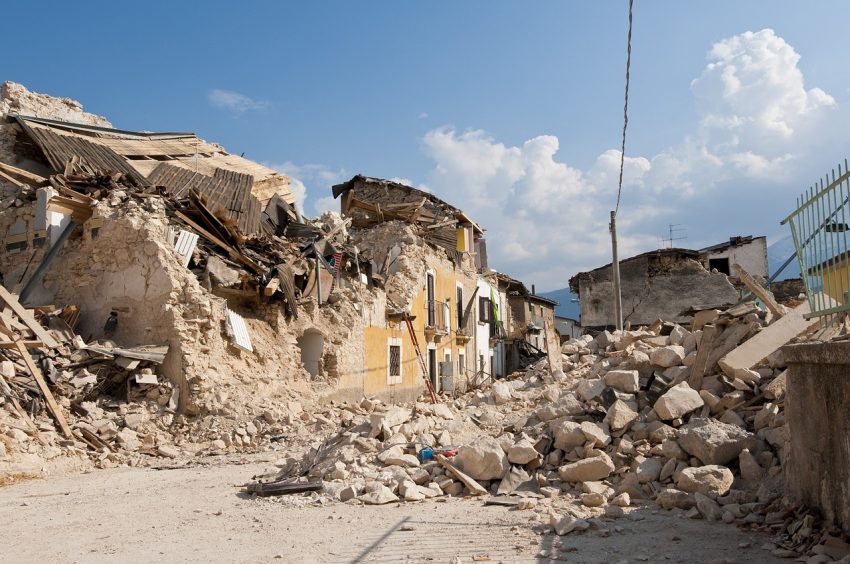The Morocco Earthquake: Challenges and Regional Effects

On September 8, 2023, at 22.11 UTC, a massive earthquake hit Morocco’s Atlas Mountains. The 6.8 magnitude quake was the largest in the country for the last 120 years. It killed more than 2,800 people and injured 2,500 more. These numbers are still growing.
While earthquakes are fairly common in Morocco, major occurrences like the one from September 8 leave a devastating and disproportionate impact on a country facing a variety of tough challenges as it is. In this article, we are going to discuss how this natural disaster further exacerbates the conditions underprivileged minorities in the country are subjected to.
Morocco’s Amazigh Communities: How Nature Exacerbates Social Injustices
Morocco’s Amazigh communities living in the region of the country’s High Atlas Mountains have been suffering the toughest consequences from the recent earthquake. Due to various reasons, these communities have been historically neglected and left to live in less-than-desirable conditions.
The areas inhabited by the Amazigh lack infrastructure and often fail to meet basic human needs. One instance includes the requirement facing the local population to build homes of clay only for aesthetic purposes. This practice has prevented the Amazigh from constructing durable buildings that can withstand the power of natural forces.
What Makes the Recent Earthquake Unique in Morocco?
As we already mentioned before, Morocco has suffered multiple serious earthquakes throughout its recent history. Some of these include the 1960 Agadir and the 2004 Rif quakes.
However, what experts say makes the 2023 High Atlas earthquake so distinctive is the fact that it has happened at a time when communication and access to information are at an all-time high. Thus, not only journalists are recording the aftermath of the disaster. Locals are readily documenting their circumstances and sharing them with the world. Thus, the disparities and injustices in which they live become even more glaringly obvious.
The Background
The Amazigh communities are among the poorest in Morocco. This reality, however, has managed to remain hidden from the world. The government has tried to withhold this fact, too. However, given the recent events, the dire conditions of the Amazigh can no longer remain a secret.
Another reason why the recent earthquake has turned into a pivotal moment for Morocco’s underprivileged communities is that it has demonstrated a clear lack in the country’s governance. The state largely failed to act appropriately in the face of calamity.
The Palace took the unprecedented 20 hours to release a statement on the earthquake and convene a Cabinet meeting. This is an unparalleled delay in the recent history of today’s modern world. To further add to this outrageous fact, it took Morocco’s head of state, King Mohammed VI, several days to address the people.
Needless to say, such an approach leaves people questioning the country’s leadership. Even worse, it detrimentally slows down emergency response and the authorization of foreign aid.
Obstacles to Recovery
Talking about foreign aid, we cannot help but mention that the International Federation of Red Cross and Red Crescent Societies has stated that dealing with the earthquake’s aftermath could take many years. The reasons are quite a few.
To begin with, the infrastructure in the region is very poor and outdated. The vast majority of the roads are not paved. Electricity and running water are also scarce or unreliable.
Further, the terrain is rough. The hardest hit regions are located deep within the High Atlas Mountains, where the climate is harsh, and navigating is challenging.
Because of these circumstances, it will take more time and resources to rebuild the devastated areas. Most likely, the majority of the necessary material will have to be transported via helicopters and planes. However, this is not all. The Moroccan leadership has long prioritized urban areas and tourist destinations. Thus, rural and more secluded areas like the High Atlas Mountains have been left with little to no resources for development and have slowly crept into a state of dilapidation.
The centralized nature of the country’s governance exacerbates the situation even more. Provinces are unable to govern themselves and are drowning in bureaucracy and lack of effectiveness.
Is Morocco the Only One?
Sadly, experts say Morocco is not the only example of bad governance in the face of disaster. The recent flooding in Libya and the earthquakes in Turkey and Syria have clearly demonstrated that the region needs serious changes in governance and addressing natural disasters.
According to experts, many of Morocco’s neighbors suffer from uneven economic development, corruption, and lack of respect for human rights. That is why the help of the international community is so vital in times like these.
Is There Hope on the Horizon?
Because of the recent events, the world has turned its eyes to the underrepresented communities in Morocco. Also, in 2011, the locals organized uprisings, which did have some positive effect on their representation at the state level. However, the road ahead is still long and bumpy, and hardly any change will happen without international assistance.